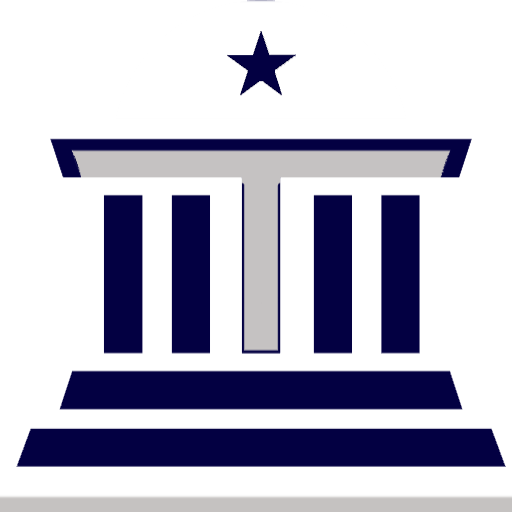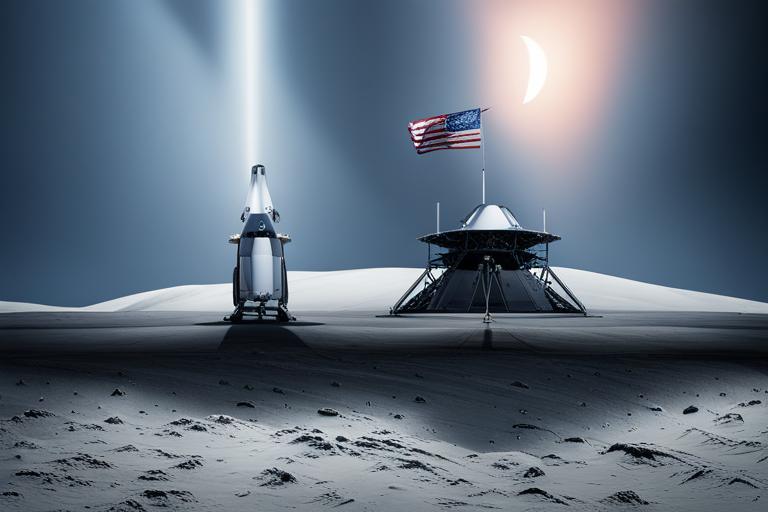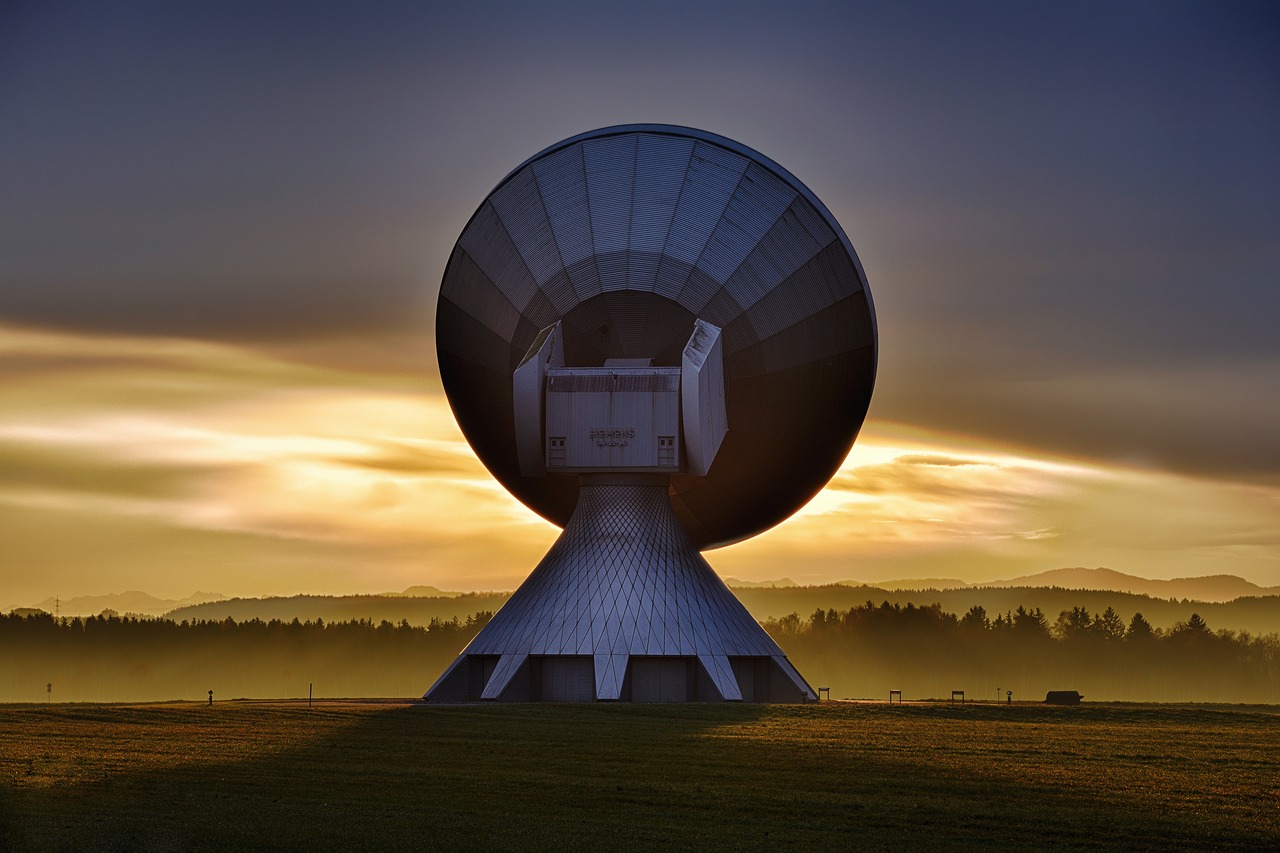Business tycoon Jeff Bezos’ space firm, Blue Origin, secured a pivotal deal to create a manned lunar lander as part of NASA’s Artemis initiative. The spacecraft, designed to transport astronauts to the moon in the coming years, was awarded to Blue Origin on Friday.
“We’re making an additional investment in the infrastructure that will pave the way to land the first humans on Mars,”
Bill Nelson, NASA Administrator
The effort is a huge undertaking estimated to cost over $7 billion in total. NASA has awarded the contract to Blue Origin, and the value of the contract is just over $3.4 billion. According to Blue Origin Vice President John Couluris, the company will contribute more than the contract value.
“We’re making an additional investment in the infrastructure that will pave the way to land the first humans on Mars,” said Bill Nelson, NASA Administrator, when announcing the Blue Origin award. “Our shared ambitions now are no less lofty than when President Kennedy dared a generation of dreamers to journey to the moon.”
On Friday, Bezos expressed his pride on Twitter for being a part of NASA’s mission to land astronauts on the Moon- this time with the intent to remain there.
The group led by Blue Origin, joined by Lockheed Martin, Boeing, Draper, Astrobotic, and Honeybee Robotics, outdid the proposition of a team led by Dynetics, which is owned by Leidos.
Leidos, as stated in their message to CNBC, emphasized their dedication to supporting NASA’s remarkable mission to revisit the moon. The company showcased their ongoing work on NASA technology and expressed their commitment to continue aiding in these significant space endeavors.
According to Jim Free, the associate administrator for NASA’s exploration division, two more proposals were submitted for the SLD contract. However, they were not considered to fully meet the requirements listed in the solicitation, so they were disregarded. This information was revealed in documents that were made public on Friday.
NASA created the Sustaining Lunar Development (SLD) program, a follow-up competition to award a crew lander contract after SpaceX was the only winner in 2021.
That first program, called the Human Landing System, or HLS, gave SpaceX a contract to develop a variation of its Starship rocket for Artemis missions. Prior to the HLS award, NASA was expected to choose two winners, but the agency’s budget at the time and SpaceX’s more-affordable bid resulted in there being a single winner.
Both HLS and SLD are part of NASA’s Artemis program to land astronauts on the moon, with the agency hoping to start flying crews to the lunar surface within the next few years. In December, NASA completed the first Artemis mission, which had no people on board, flying its Space Launch System, or SLS, rocket and Orion spacecraft around the moon for the first time.
According to Free, who discussed NASA’s decision, Blue Origin’s proposal had several strengths and weaknesses. Among the strengths were two unmanned test missions scheduled for 2024 and 2025, early-stage technology development, an excess of capabilities for the lander, and a reasonable price. However, Free also highlighted two weaknesses in Blue Origin’s bid consisting of communication issues during flights, as well as some missed deadlines and conflicting parts in their schedule.
Dynetics was not chosen by NASA because of certain uncertainties and unclear aspects of their plan according to Free, who highlighted that despite its strengths, those factors were too much of a deterrent. Additionally, Free noted that the company’s price point was much higher compared to Blue Origin’s, although NASA did not reveal the exact amount.
SpaceX’s victory in securing the HLS contract resulted in fervent protests by Blue Origin. The company, owned by Bezos, criticized the decision, calling it “flawed,” and contested it through the Government Accountability Office. Subsequently, Blue Origin filed a lawsuit against NASA after being unsuccessful in overturning the decision through the GAO’s review process.
The lawsuit led to sparring between the billionaires, with Blue Origin calling SpaceX’s Starship an “immensely complex & high risk” approach, referring to criticism made by NASA officials in evaluating the company’s HLS bid.
Around a month prior to the lawsuit, Jeff Bezos himself made an offer to foot the bill, specifically a staggering $2 billion, for NASA expenses for two years in return for a lunar lander deal. NASA didn’t give any public response to the offer, not even after Bezos enhanced the offer by sweetening the deal further, quoting that he would cover “over $3 billion” through private funding in court discussions.
While the trial was ongoing, Musk intervened and stated that “no matter how skilled your lawyers are, litigating won’t get you to the moon.”
The legal dispute of Blue Origin impacted the progress of the HLS agreement for a significant portion of the year. However, the US Court of Federal Claims later sided with NASA, dismissing any accusations of wrongdoing against its officials and the organization as a whole.
Nelson recently shared why they initiated a second bidding process that would allow for another privately developed lunar lander. As he put it, “Competition is key to our success.”
“We can leverage that money by working with a commercial industry and, through competition, bring those costs down to NASA,” stated Nelson during his Senate hearing in 2022.
SpaceX is still working on the Starship rocket which stands at around 400 feet tall. In April, the company tried putting it into space for the first time, but unfortunately, it exploded mid-flight. Elon Musk, the CEO of SpaceX, has predicted that the company’s Starship development will cost around $2 billion this year and is hopeful that the next launch will reach orbit around the Earth.
In the past year, NASA provided SpaceX with an extra $1.15 billion prize as part of the HLS agreement, enabling them to acquire a second crewed demonstration landing from the company. This boosted SpaceX’s HLS contract’s overall value to $4.2 billion, which will remain valid until 2027.
According to federal records, NASA has given SpaceX approximately $1.8 billion thus far for HLS.









Leave a Reply